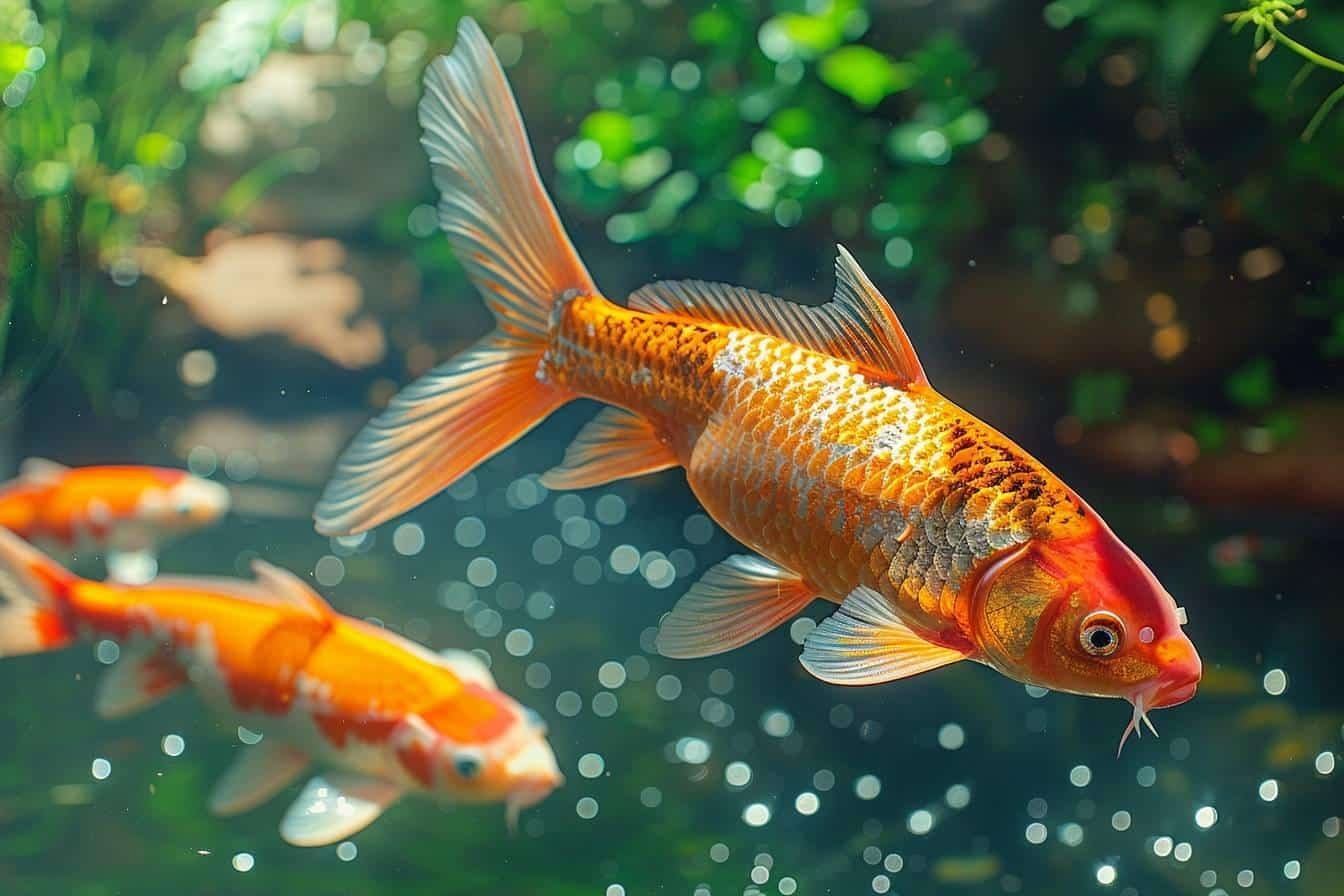Creating a koi pond is an exciting adventure that offers a fascinating aquatic spectacle in your garden. As a pet shop floor manager and animal lover, I know how essential it is to look after the well-being of our little aquatic stars. Here's a complete guide to help you create the perfect ecosystem for your Koi.
How do you build a good koi pond?
To create a koi carp pondThere are a number of factors to consider if you want a suitable, sustainable home. First of all, you need to think about the location. Choose a partially shaded area to limit the proliferation of algae. Next, think about the depth. A koi pond should be at least 1.50 m deep to guarantee stable thermal conditions and allow the fish to spend the winter in peace.
The shape and size of the pond depend on the number of Koi you want to keep. For one adult koi carpFor a more detailed analysis, plan on around 1 m³ of water per fish. This is equivalent to one koi carp per 10,000 litres of water. Don't forget to include areas of varying depths to provide habitat variation.
The filtration system is essential. It ensures that the water remains clear and of good quality. Mechanical filtration combined with biological filtration is recommended. A UV-C filter can also be added to control algae. Here are a few things to consider when choosing a filtration system:
- Solid filtration systems
- UV-C filters
- Pumps adapted to the volume of water
- Skimmers to recover surface debris
To make maintenance easier, fit your pool with bottom drains and sleeves to prevent sediment build-up. Finally, don't forget the right pumps and fittings for the size of your installation. To top it all off, a landscape decoration with plants such as water lilies (which carp won't eat!) and other aquatic plants in floating baskets will add an aesthetic touch and protect your plantings from voracious herbivores.
Feeding koi carp
Food plays a crucial role in the health and coloration of koi carp. These fish are mainly herbivores, but they also appreciate animal proteins. Here's an anecdote: I once tried feeding my carp a little lettuce, and they loved it! Generally speaking, a varied diet is essential.
Koi carp feed mainly on pellets specially designed for them. These pellets must be adapted to the size of the fish and enriched with nutrients to maintain their splendid colours and vitality. The daily ration should be between 1 and 3 % of their body weight. Here are the different types of food you can feed them:
- Granules adapted to their size
- Live food: shrimps, mud worms, daphnia
- Plants: lettuce, duckweed
Avoid overfeeding your koi carp during the summer and gradually reduce rations as winter approaches. Koi become lethargic below 6°C and do not need to be fed.

Koi pond maintenance
Regular maintenance of your koi pond is essential to ensure a good biological balance and the health of your fish. It starts with removing debris such as dead leaves, which can acidify the water and encourage algae growth. Use a sludge extractor to remove deposits from the bottom of the pond twice a year, and replace some of the water to maintain optimum quality.
One of the crucial points is not to empty the pool completely, as this could upset the bacterial balance necessary for aquatic life. Regular cleaning of the filters is also essential. You should also test the water quality frequently:
| Parameter | Recommended value |
|---|---|
| pH | 7-8.5 |
| Nitrates | Less than 50 mg/l |
| Nitrites | Less than 0.1 mg/l |
| Ammonia | Less than 0.1 mg/l |
| Calcium | 100-300 mg/l |
Make sure you have all the equipment you need: a landing net to retrieve your koi if you need to, a sock to transport them without stress, and a water test kit to check the parameters. You'll be surprised how useful these tests are for ensuring a healthy environment.
How big is a koi carp pond?
The size of the pond plays a fundamental role in the well-being of your Koi carp. Due to their gregarious, peaceful and resilient nature, Koi carp can live up to 70 years if given optimal living conditions. It's not for nothing that they're not designed for life in an aquarium, and I've seen customers make this mistake by trying to keep them in tanks that are too small.
We recommend a minimum tank size of 10,000 litres, equivalent to 1 m³ per fish. This size not only provides enough space for movement and growth, but also maintains a good water balance.
When it comes to depth, I can't stress this enough: opt for a minimum of 1.50 metres. This depth limits temperature variations and provides a refuge during the winter. A funny anecdote: I have a customer who, because the bottom of his pond was too shallow, had to install a fish heater, turning his garden into a koi spa!
Here are some tips and mistakes to avoid when choosing the right size for your pool:
- Don't underestimate the size you need for your koi carp
- Provide areas of varying depths for a more natural habitat
- Avoid overly complex shapes that complicate the installation of filtration systems
By keeping to these dimensions and providing all the necessary equipment, your Koi carp will thrive in a healthy, harmonious environment.
I wish you good luck in creating your koi pond! Don't forget that the key to success lies in regular maintenance and good care of your fish. With a little patience and a lot of love, your pond will become a veritable oasis of peace and beauty.

16 thoughts on “Créer un bassin carpe koï : guide complet pour un écosystème parfait”